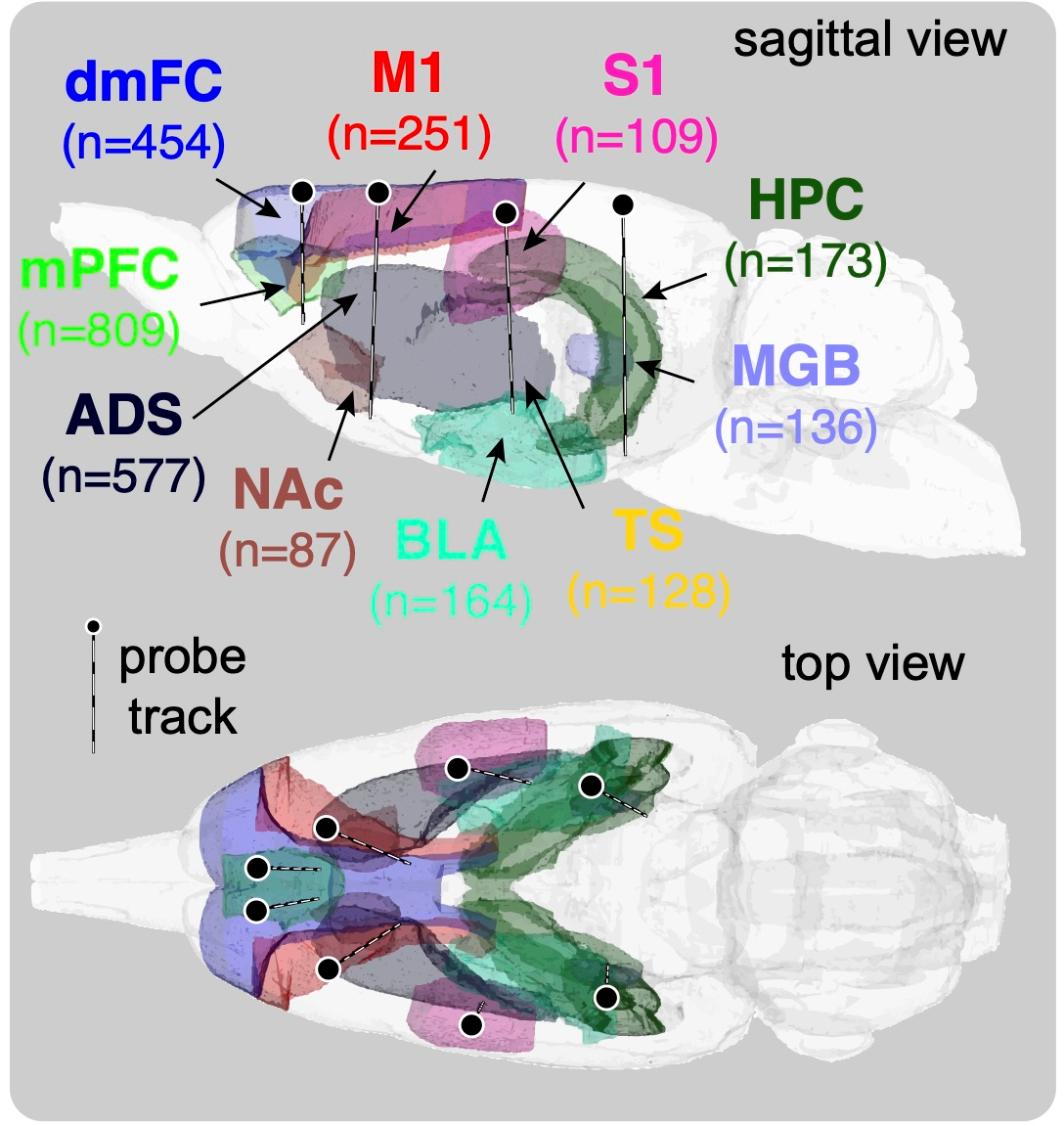Abstract
Using large-scale recordings from frontal decision-making regions in rats performing a perceptual decision-making task, we recently discovered an internally-timed signal, coordinated across simultaneously recorded neurons, that indicates the moment when the subject makes up their mind, or in other words, commits to a decision. This moment, which we refer to as “nTc”, for “Neurally-inferred Time of Commitment,” can occur covertly, many hundreds of milliseconds before, and independently of, the moment when the subject overtly reports their decision. In a further set of experiments, using 8 Neuropixels probes to record from thousands of neurons in tens of brain regions simultaneously across the brain, we discovered that decision-related neural activity is tightly coordinated across brain regions. Remarkably, the activity coordination across these regions, and across both hemispheres, is dominated by a single one-dimensional variable. Furthermore, the frontally-defined nTc marks a major state change in decision-related neural activity across the brain: in all recorded regions, choice-prediction accuracy abruptly stops growing, and cross-region coordination drops drastically, after nTc. This suggests that detection of nTc, a purely internal, neurally defined moment, will be critical for appropriately parsing decision-related neural activity into states with entirely different functional properties and significance.
Going beyond decision-making, we point out that the overwhelming bulk of variance in neural activity is of unknown origin or meaning yet is known to be structured across neurons. This is exactly what nTc looked like before we discovered it. We propose that, similar to nTc, most neural activity may consist of internally-timed and internally-defined signals. Such signals would induce structure in neural activity across neurons yet, if their timing and characteristics are unknown, would otherwise look like noise. We further propose that modern AI techniques, combined with large-scale recordings, provide unprecedented opportunities to detect, parse, and characterize that structure. We believe this characterization will provide fundamental clues towards understanding internal signals and thus towards elucidating the inner conversation of the mind.

Biography
Born and raised in Mexico City, Carlos Brody did his Ph.D. in the Computation and Neural Systems Program at Caltech. He then did a postdoc in Ranulfo Romo's lab in Mexico, analyzing and modeling data from monkeys performing working memory and decision-making tasks. This was followed by a short postdoc at NYU in Tony Movshon's lab, after which he took his first faculty position at Cold Spring Harbor Labs, working in computational neuroscience. After a few years at CSHL, he started doing experiments with behaving rats. He then moved to Princeton University, where his lab pursues both computational and experimental neuroscience. Brody is an Investigator of the Howard Hughes Medical Institute.
